On a recent trip to Malawi, my travels took me to the remarkable town of Livingstonia, where the legacies of nineteenth-century Christian missionaries are still strongly felt. Previously known as Khondowe, the area is located atop the Livingstonia Plateau, which rises just west of Lake Malawi at a height of 3000 feet.

View of Lake Malawi from near Livingstonia in 1966 (Photo by Laird Scott).
In 1870s, Livingstonia became a target of Scottish missionaries, who paved the way for the launch of official colonization in Malawi in 1890s. The missionaries were led by Dr. Robert Laws, who was inspired by the speeches and writings of Dr. David Livingstone, the most famous missionary to have traveled across the African continent.
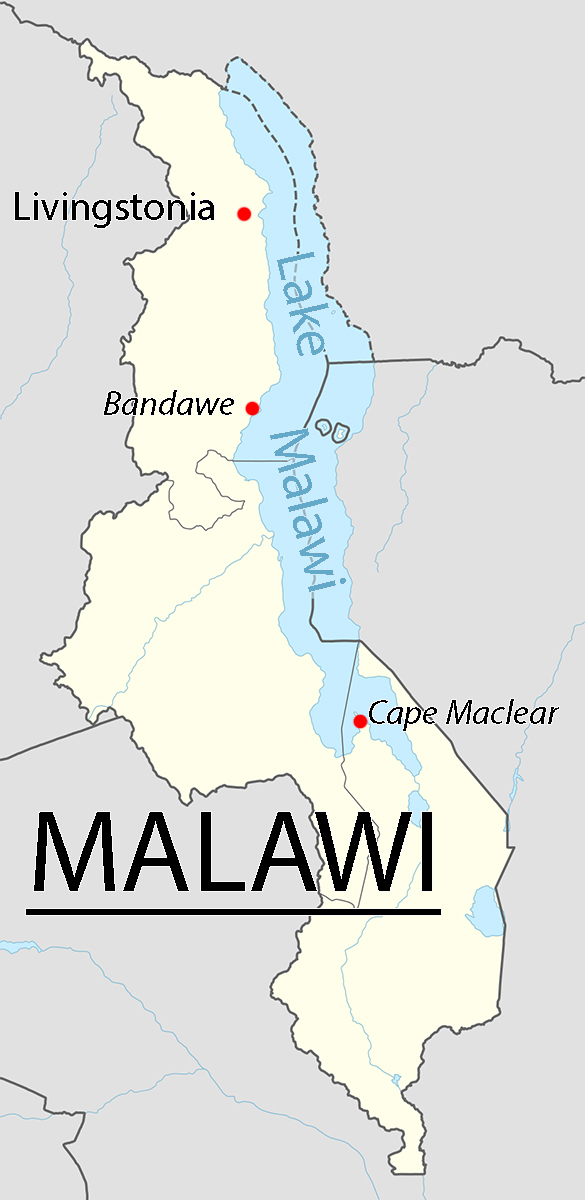
Map of Malawi showing Livingstonia as well as the previous settlement sites of Dr. Robert Laws.
Laws and his disciples originally settled at Cape Maclear, where they were beset by aggressive mosquitoes. Suffering from malaria attacks, Laws and his fellow missionaries moved north to Bandawe on Nkhata Bay in 1881, but this site too proved unfriendly, as it exposed the missionaries to another set of malarial diseases.
In early 1894, Laws led his team to Khondowe, and they finally established themselves on this site, which Laws named Livingstonia in honor of his mentor.
The Gordon Road
People visiting Livingstonia travel on the Gordon Road, named after Scottish missionary David Gordon. Built to ease movement between the Livingstonia center and the lakeshore, the road has twenty-one bends and takes almost two hours to drive. During the rainy season, the road's stones become very slippery, making transportation difficult.
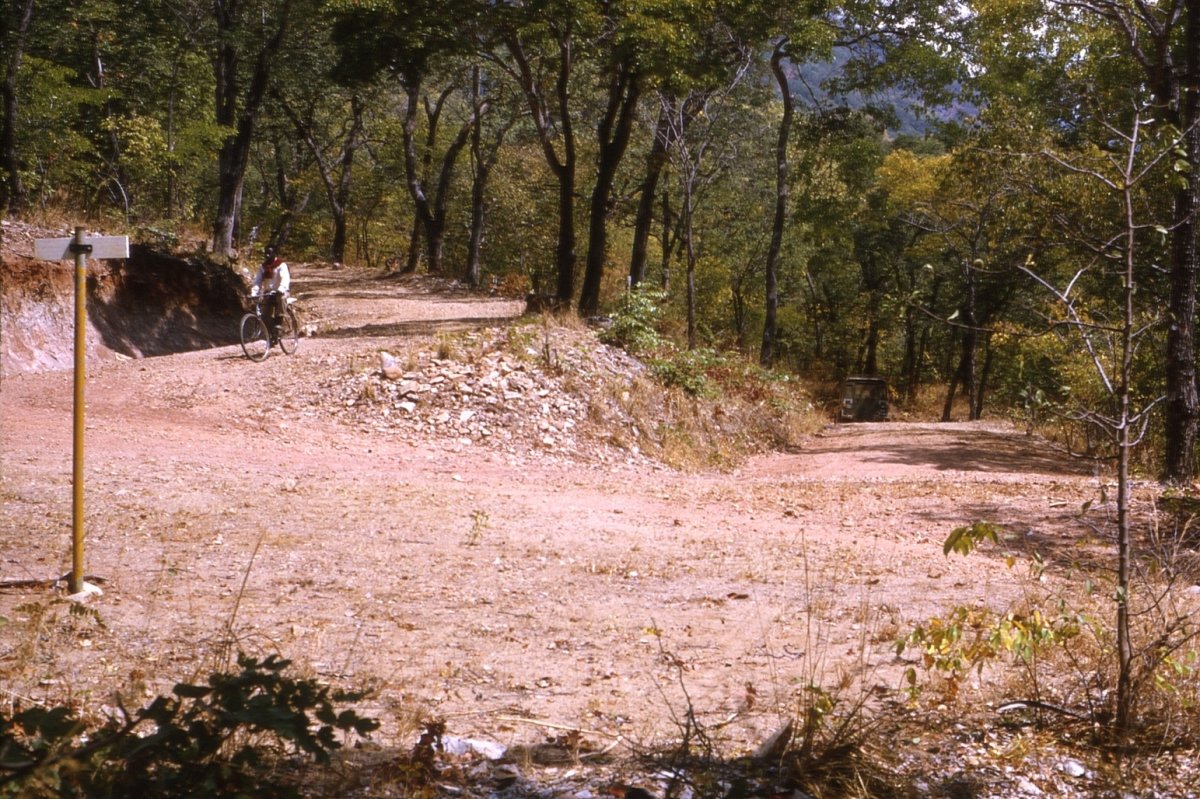
The Gordon Road between Lake Malawi and Livingstonia in 1966 (Photo by Laird Scott).
Since the Scottish missionaries handed over the Livingstonia synod, the road has been left largely unattended, although the synod itself preserves the road for historical significance.
Climbing the Gordon Road, one encounters an interesting hydrological feature known as “holy water:” water comes up from a small hole in the ground and runs for two or three meters, before disappearing in the bushes. The water's source is unknown, but it is believed that the ancestral spirits created this spring with the aim of providing water to the people who climb the plateau.
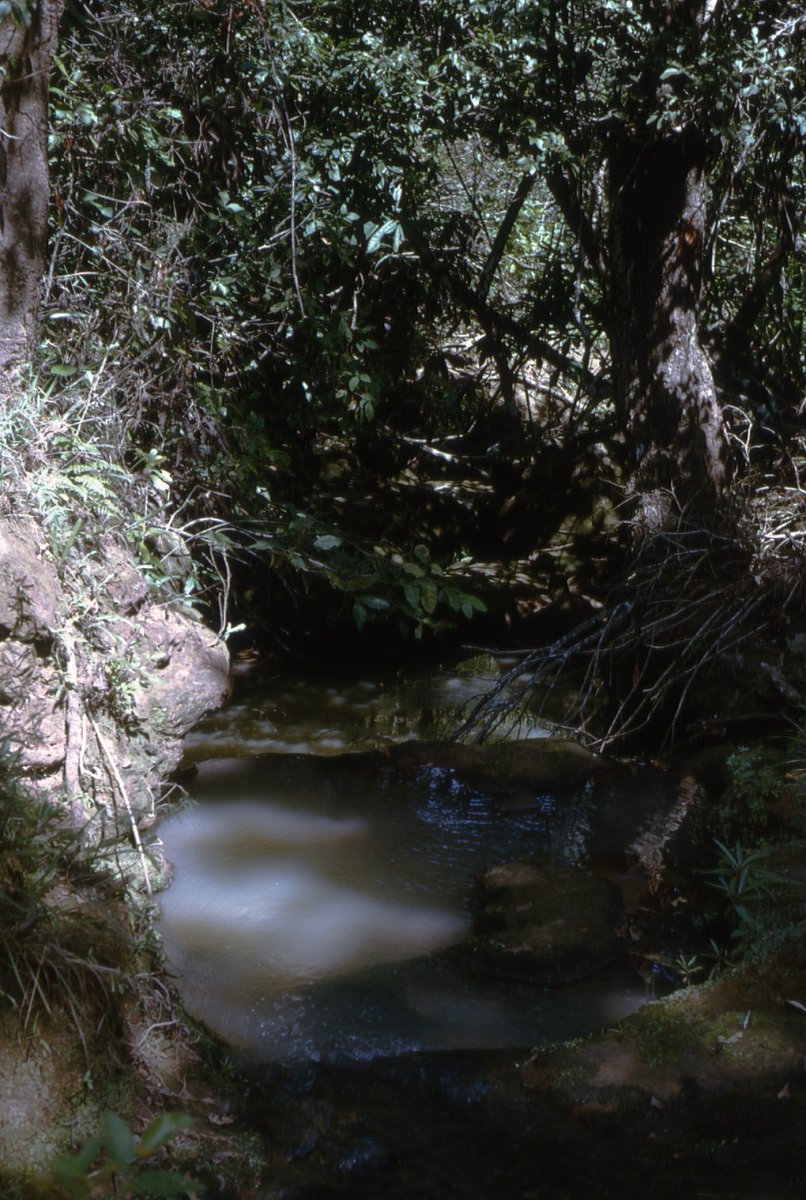
A secluded stream near Livingstonia in 1966 (Photo by Laird Scott).
According to the people who live on the plateau, the water is perfectly pure and has special properties: anyone drinking it will be healed from diseases and even relieved from any doubts they carried with them on the road.
Livingstonia Missionary’s Church
Laws built a church in the style of the Scottish Presbyterian Church on the plateau. The church still exists, operated by the Church of Central Africa Presbyterian denomination in Mzuzu City. A large structure with a soaring tower, it has spread the gospel, drawing the faithful from across the plateau.
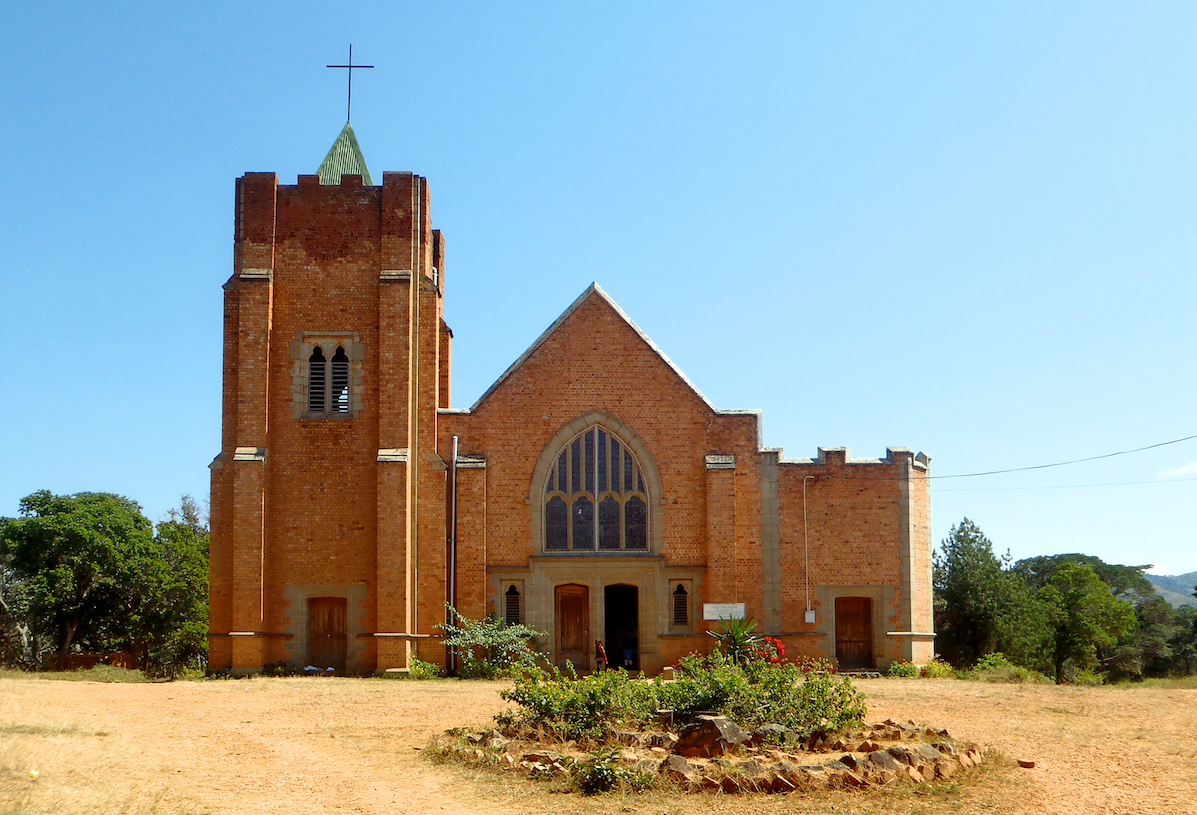
The missionary church in Livingstonia, Malawi.
During the early days of its existence, congregation members traveled from the foot of the plateau to attend church services. Pastors walked down to preach, trying to bring more members in the church.
David Gordon Memorial Hospital (DGMH)
The Scottish missionaries established a hospital in Livingstonia in 1910, which remains the only hospital on the plateau. A small red brick structure, its female and male wards are capable of treating between 150 and 200 people.
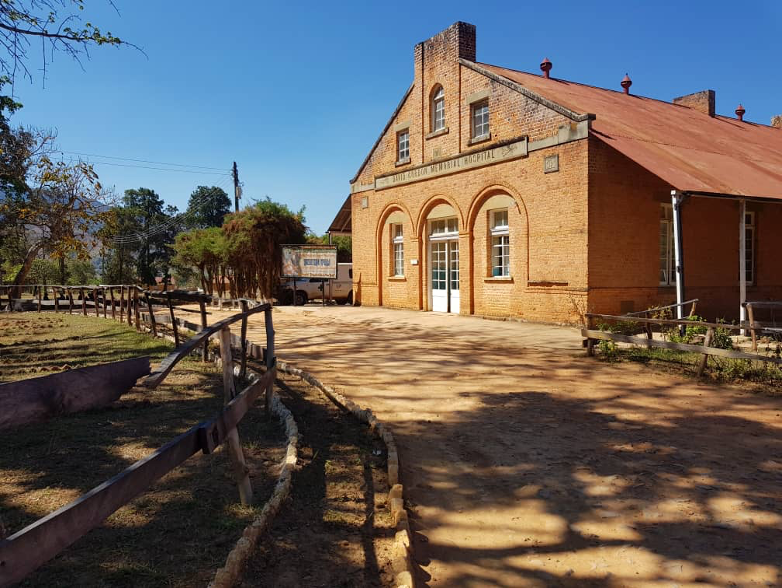
David Gordon Memorial Hospital in Livingstonia, Malawi (Photo by author).
Initially, missionary nurses and doctors played a leading role in treating patients, but eventually Malawian-trained medical professionals became more common. Currently, a good number of nurses are Malawians, with only few visiting doctors from abroad.
Since DGMH is a small hospital, it does not handle serious cases, which are transferred after screening to the Mzuzu Central Hospital, a two-and-a-half hour drive. Like the church, missionaries passed responsibility for the hospital to the Church of Central African Presbyterian fifty years ago.
Education
In addition to converting the people on this site to Christianity, the missionaries also planned to educate them. They trained their new charges in basic literacy with the goal that they would be able to read and understand the Bible. Higher or classical education began around 1895.
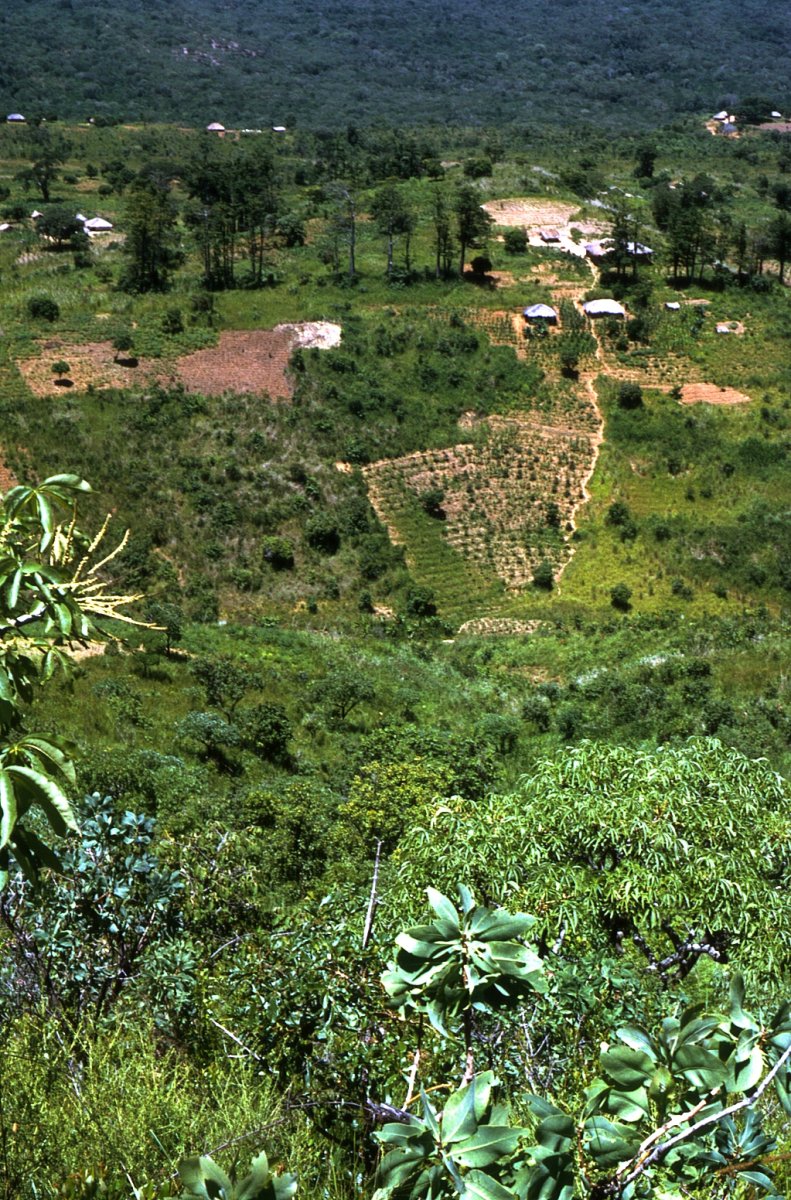
View downhill from the Livingstonia Plateau, 1966 (Photo by Laird Scott).
Laws and his team built school facilities on the plateau. They trained men as pastors, and later began training teachers as well. A number of influential individuals who participated in fighting against colonialism were educated at the missionary school in Livingstonia.
The missionaries also left the responsibility to look after the school in the hands of the Church of Central Africa Presbyterian. The church ran the Livingstonia Secondary School for a couple of years, until converting it into a university: University of Livingstonia, Laws Campus.
The university started with only one education program, but currently offers programs in several fields, including Public Health, Environment Science, Social Science and Computer Science.

The courtyard of the University of Livingstonia, Laws Campus (Photo by author).
Since its inception, the University of Livingstonia has graduated a number of students who have remained in Malawi to work and contribute to its development. Other graduates have gone on to continue their studies around the world, including the United States and the United Kingdom.
Daily Life and Cuisine in Livingstonia
The majority of Malawians depend on subsistence and commercial farming as a means of survival. The most common crops are corn, cassava, potatoes, sorghum, and beans, as well as bananas and mangoes. Commerce in Livingstonia occurs at a small market. Traders sell food and other groceries, not luxuries, and barbershops do a brisk business in hair cutting.
A plate containing nsima, a local dish enjoyed in Livingstonia, Malawi.
In the Livingstonia region, the staple food of the people in is nsima, a hard porridge eaten with beans, meat, and other greens. Another local favorite is a small fish from Lake Malawi called usipa, very commonly eaten on the plateau.
